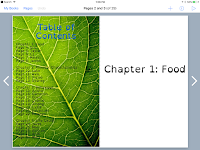At the Singapore American School, I am able to provide opportunities in the strands of integration, coding, robotics, virtual reality, Creation Stations: An Innovative Learning Space, and makerspaces.
For integrating ipads into the curriculum, we use the ISTE Standards which we converted into student-friendly 'I Can' statements.
With respect to coding, my students use apps such as Kodable, Daisy the Dinosaur, and Osmo Coding. We celebrate Hour of Code and engage in a Coding Reboot learning activity.
For robotics, Beebots are embedded in the math curriculum. We also expose students to Dash robots in a more discovery and inquiry style approach.
Virtual Reality comes in the form of Google Expeditions and YouTube 360 videos aligned to grade level NGSS units.
Students experience open-ended learning at the Creation Stations; a center focused on art building, coding, engineering, and filmmaking.
The Makerspace is a student-centered learning environment that provides opportunities for children to explore a design cycle (Imagine, Plan, Create, Improve, Share).


























